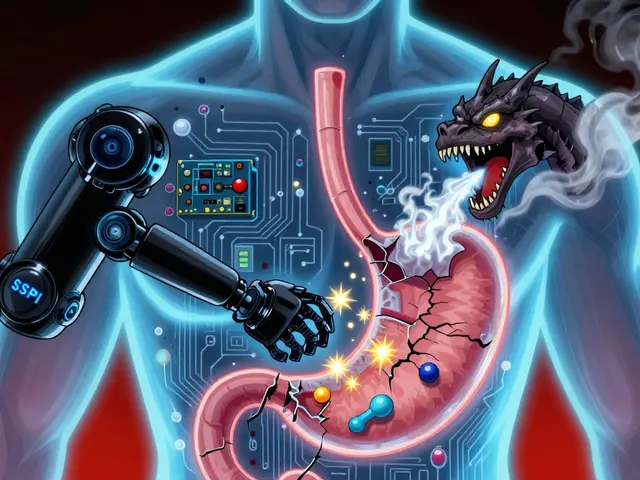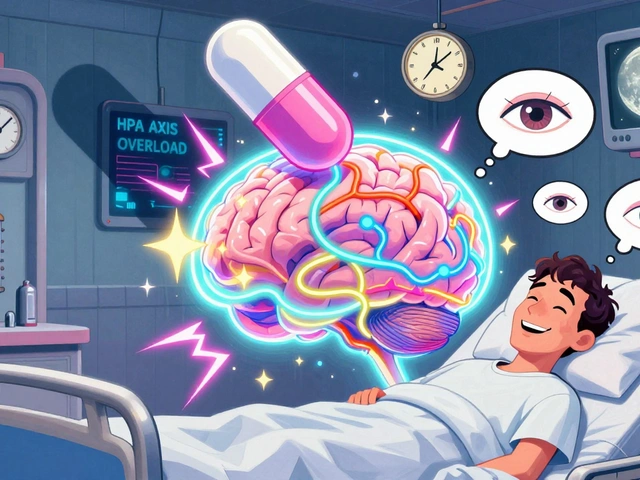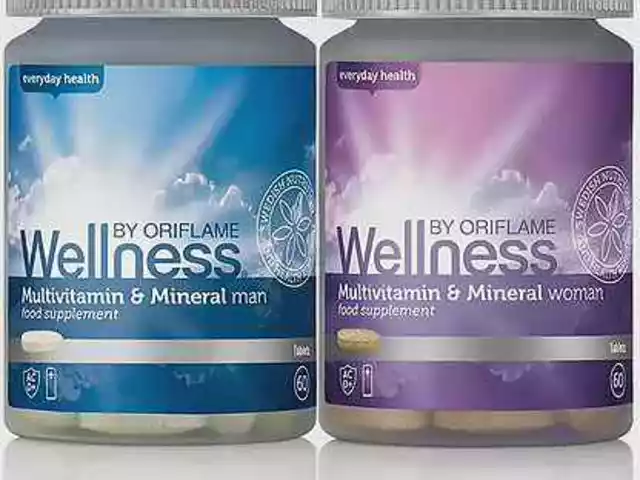Struggling with pain management but cautious about using Hydrocodone? You're not alone. Many people are on the lookout for effective alternatives that provide relief without the risks associated with opioid use. Today, we're diving into some viable options, each with its perks and pitfalls.
Topical Analgesics (e.g., Lidocaine, Capsaicin)
Topical analgesics offer a unique way to combat pain by applying the treatment right where it hurts. Lidocaine patches and capsaicin creams, for instance, target localized pain, making them great for surface-level issues.
Pros
- Minimal systemic side effects
- Avoids gastrointestinal/renal risks
- Ideal for superficial pain
Cons
- Limited to surface-level pain
- May require frequent reapplication
- Ineffective for deep tissue or internal pain
- Topical Analgesics
- Acetaminophen
- Nonsteroidal Anti-Inflammatory Drugs (NSAIDs)
- Physical Therapy
- Cognitive Behavioral Therapy
- Conclusion
Topical Analgesics (e.g., Lidocaine, Capsaicin)
When it comes to localized pain, sometimes less is more. That's where topical analgesics come in. These are specifically designed to target pain without passing through your whole system, making them a popular choice for those concerned about systemic effects of oral medications like Hydrocodone.
Lidocaine is a local anesthetic you might find in patches or gels. It's like shutting off the pain signals from the little switchboards on your skin. Pretty handy for managing things like arthritis or small area injuries. Capsaicin, on the other hand, comes from chili peppers and works by depleting a neurotransmitter called 'Substance P'. sounds fancy, right? But all it's really doing is turning down the heat on pain.
Pros
- Minimal systemic side effects mean you won’t be dizzy or groggy after using these.
- Super useful for surface-level pain, especially in places like knees, elbows, or spots that need constant attention.
- If you're worried about drug interactions, these are a safe bet since they stay on the surface.
Cons
- Not so great if your pain is deep-seated or internal. Sadly, a Lidocaine patch won’t reach your sore stomach muscles.
- They often require reapplication, which can be a hassle if you're busy. Nobody loves stopping their day to reapply cream.
- Some might feel skin irritation, so it's not a one-size-fits-all fix.
In a nutshell, topical analgesics are like having a personal pain management system just for a particular spot. Great if you're dealing with aches that don't require a full-body approach. Consider them a nifty part of a broader, personalized pain management toolkit.
Acetaminophen
When it comes to managing pain, especially mild to moderate kinds, Acetaminophen is usually a go-to option. Its widespread use owes to its availability and effectiveness. And here's a neat fact – it's often found in many over-the-counter medications, including those popular multi-symptom cold and flu remedies.
One of the main reasons people opt for acetaminophen over something like Hydrocodone is its safety profile. It doesn't mess with the stomach lining, which is a huge win if you're worried about ulcers or gastrointestinal issues.
Pros
- Easily accessible in most pharmacies and even grocery stores
- Lower risk of causing stomach problems compared to NSAIDs
- Particularly effective for headaches, fevers, and minor aches
- Doesn't cause drowsiness, so it won't interfere with your day-to-day activities
Cons
- While effective for minor pain, it's not the best for severe pain management
- Overdose is a real risk and can lead to liver damage
- May interact with alcohol consumption, increasing toxicity
If you're thinking about using acetaminophen, just keep an eye on that daily limit of 4,000 mg. Consuming more than that can really strain your liver. Here's a pro tip: always check the labels of all medications you’re taking to avoid accidentally doubling up on it.
Next time you're in the pain relief aisle, you might notice acetaminophen hiding under various brand names like Tylenol. It's also available in generic forms, which is usually easier on the wallet, offering the same relief without the brand price tag.

Nonsteroidal Anti-Inflammatory Drugs (NSAIDs)
When it comes to battling pain and inflammation, Nonsteroidal Anti-Inflammatory Drugs (NSAIDs) are often a first-line choice for many. These drugs, including familiar names like ibuprofen and naproxen, work by reducing inflammation and alleviating pain.
NSAIDs are particularly popular for conditions like arthritis, menstrual cramps, and other forms of pain that involve swelling or inflammation. Taken orally, they target and reduce the enzymes responsible for inflammation, making them versatile in managing pain.
Pros
- Effective for inflammation-related pain
- Well-known and easily accessible over-the-counter (OTC)
- Versatile in treating various conditions
Cons
- Can cause gastrointestinal issues like ulcers if overused
- Potential for kidney damage with long-term use
- Not ideal for those with heart conditions or risk factors
The stats speak for themselves. An estimated 30 million people take NSAIDs daily worldwide, highlighting their popularity and trust.
However, they are not without their downsides. Over-reliance on NSAIDs can lead to serious side effects. It's crucial to follow dosing recommendations and consult with a healthcare professional, especially if you plan on using them long-term. A quick tip: always try to take NSAIDs with food to minimize the risk of stomach irritation.
Physical Therapy
When it comes to pain relief alternatives, physical therapy stands as a solid choice for many. It focuses on strengthening and stretching the body to improve mobility and reduce pain, avoiding the risks tied with medications like hydrocodone. Your physiotherapist designs exercises tailored to your specific needs, often working wonders for back pain, arthritis, and more.
Benefits
The perks of physical therapy extend beyond just pain relief. It can help improve your overall functionality and even prevent future injuries. Here’s a cool fact for you: According to the American Physical Therapy Association, people who undergo physical therapy report about 20% greater improvement in physical function compared to those who don’t.
"Physical therapy is not just about reclaiming lost function, it's about improving life quality in the long run." – Dr. Sarah Thompson, PT
Challenges
Of course, it’s not all sunshine and rainbows. The journey requires commitment and patience. You'll need to make time for sessions and stick to the home exercise program. Results take time, but the payoff can be a more active and less painful life.
Statistics
| Condition | Improvement Rate |
|---|---|
| Lower back pain | 65% |
| Arthritis | 50% |
| Rehabilitation post-surgery | 75% |
So, if you're seeking an alternative that helps manage pain, increases mobility, and potentially keeps those pain meds at bay, physical therapy could be worth exploring. Stick with it, and you might just find it’s a game-changer.
Cognitive Behavioral Therapy (CBT)
Cognitive Behavioral Therapy, or CBT, is not your everyday remedy for pain relief, but it's gaining traction as an effective pain management tool. This type of therapy helps you retrain your brain to manage pain differently. It's all about understanding the connection between your thoughts, feelings, and behaviors.
When it comes to ongoing chronic pain, feelings of hopelessness or frustration can amplify the discomfort. That's where CBT steps in—teaching you strategies to alter those negative thought patterns, potentially even reducing your perception of pain itself.
Pros
- Non-invasive with no physical side effects
- Can be a permanent solution with long-lasting effects
- Improves overall mental health, which can influence pain perception
Cons
- Requires commitment and active participation
- Progress may be gradual and requires time
- Availability of skilled therapists can vary by location
CBT is often suggested for individuals who not only experience pain but also have associated emotional or psychological stressors. A notable study from 2023 found that patients engaging in CBT reported a 30% improvement in managing their pain relief compared to those relying solely on medication.
Therapy sessions might include setting realistic goals, developing problem-solving skills, or practicing relaxation techniques. While it might seem unconventional, ensuring mental well-being as part of managing physical discomfort can sometimes be the hidden key to pain relief.

Conclusion
Exploring pain management strategies can be challenging, especially if you wish to steer clear of opioids like hydrocodone. But as we've seen, there are numerous alternatives to consider, each bringing something different to the table.
First up, topical analgesics such as Lidocaine and Capsaicin provide targeted relief for localized pain with minimal systemic impact. However, their use is limited to surface-level pain only. If you're dealing with more general pain, acetaminophen might be your go-to choice. It's simple and effective for mild to moderate pain without the risk of stomach irritation associated with some other medicines.
Next, we have NSAIDs, known for tackling inflammation along with pain but keep an eye out for possible gastrointestinal side effects. Swapping medication for movement, physical therapy offers long-term benefits by addressing pain through exercise and rehabilitation techniques, making it a solid plan with a professional's guidance.
Lastly, there's cognitive behavioral therapy (CBT) which targets pain's emotional and psychological facets, supplementing other treatments and providing holistic support.
Comparison Table
| Alternative | Pros | Cons |
|---|---|---|
| Topical Analgesics | Minimal systemic side effects | Limited to surface-level pain |
| Acetaminophen | Suitable for general pain | Limited anti-inflammatory properties |
| NSAIDs | Effective for inflammation | Potential stomach irritation |
| Physical Therapy | Long-term relief and function improvement | Requires commitment and access to resources |
| Cognitive Behavioral Therapy | Addresses emotional and psychological aspects of pain | May not provide immediate physical relief |
At the end of the day, choosing the right alternative depends on your specific situation. It's a mix and match scenario tailored to your needs, with your healthcare provider guiding the way. Stay informed, ask questions, and find ways to manage pain effectively without relying solely on hydrocodone.





Jennell Vandermolen
March 24, 2025 AT 15:28I think the article does a solid job outlining non‑opioid options. It’s helpful to see both medication and non‑medication routes side by side. Readers should feel encouraged to discuss these alternatives with their providers. Staying informed empowers safer pain management. Keep up the balanced approach.
Mike Peuerböck
April 5, 2025 AT 06:15The landscape of pain management has undeniably shifted in recent years. Patients are increasingly wary of opioids and are seeking greener pastures. Topical agents such as lidocaine and capsaicin represent a pragmatic first line for localized discomfort. Their pharmacologic profile limits systemic absorption, thereby curtailing the risk of central nervous system sedation. Moreover, the ease of over‑the‑counter acquisition democratizes access for those without prescriptions. Acetaminophen, while modest in potency, remains a stalwart for mild to moderate nociception. Its hepatic metabolism, however, demands vigilant adherence to dosing ceilings to forestall hepatotoxicity. Non‑steroidal anti‑inflammatory drugs excel where inflammation is the chief adversary, yet their gastrointestinal footprint warrants co‑administration of protective agents. Physical therapy, in contrast, offers a kinetic antidote, remodeling musculoskeletal architecture through targeted exercise. The empirical data underscore improvements in functional scores when therapy is pursued consistently. Cognitive behavioral therapy adds a psychologic dimension, re‑wiring pain perception pathways through cognitive restructuring. Such interventions, though seemingly intangible, have been quantified to yield measurable reductions in pain intensity. The amalgamation of these modalities affords a multidimensional arsenal, diminishing reliance on opioid monotherapy. Clinicians ought to tailor regimens to individual comorbidities, preferences, and socioeconomic constraints. Ultimately, the collective endeavor to eschew hydrocodone whilst preserving quality of life is both attainable and commendable.
Simon Waters
April 16, 2025 AT 20:01These drug options look fine but remember big pharma pushes them hard. Look for generic versions to avoid extra cost. Always read the fine print on any over‑the‑counter label.
Vikas Kumar
April 28, 2025 AT 09:48India's traditional remedies often outshine synthetic pills.
Celeste Flynn
May 9, 2025 AT 23:35When choosing acetaminophen, remember the maximum daily dose is 4 grams to protect the liver. If you combine it with other cold medicines, double‑check the total amount to avoid accidental overdose. For NSAIDs, taking them with food can reduce stomach irritation. Physical therapy schedules should be tailored to the individual's baseline strength to maximize benefit.
Shan Reddy
May 21, 2025 AT 13:21Physical therapy really can change the game if you stick to the plan. I’ve seen patients improve their range of motion by 15 % after a few weeks. Consistency is key, and the therapist will adjust exercises as you progress. It’s not a quick fix but the payoff lasts. Also, keep track of any soreness after sessions. That feedback helps fine‑tune the program.
CASEY PERRY
June 2, 2025 AT 03:08Analgesic selection should consider pharmacodynamics, bioavailability, and hepatic enzyme interactions. Topical lidocaine offers peripheral Na⁺ channel blockade with minimal systemic exposure. Acetaminophen acts via central COX inhibition, requiring strict dose capping. NSAIDs provide COX‑2 selective anti‑inflammatory effects but raise GI risk profiles.